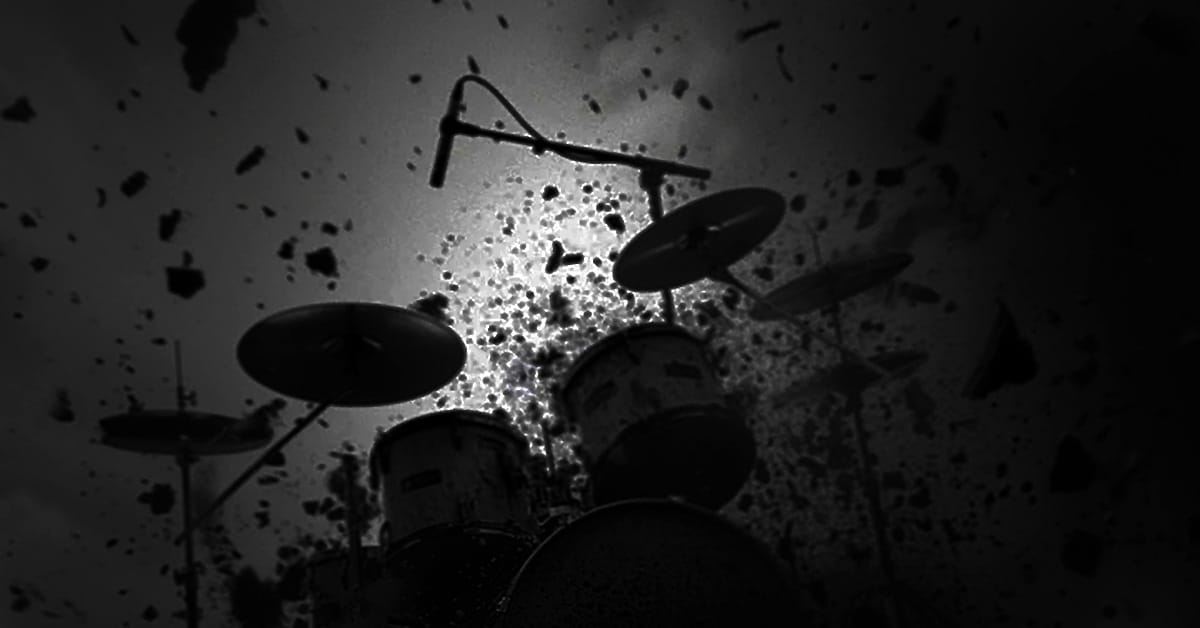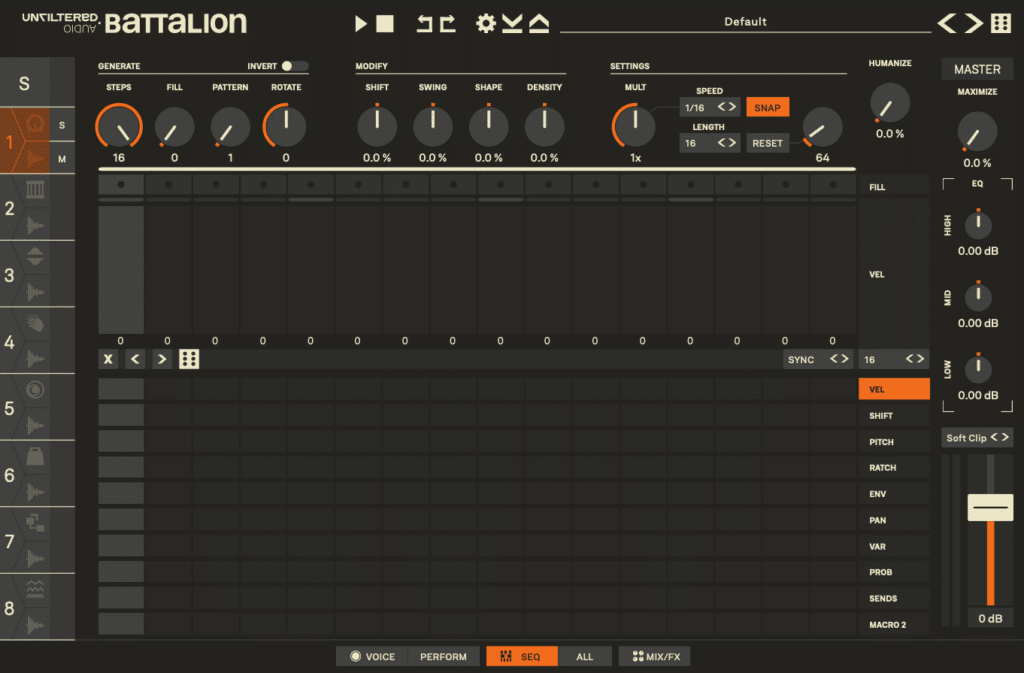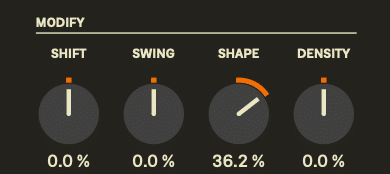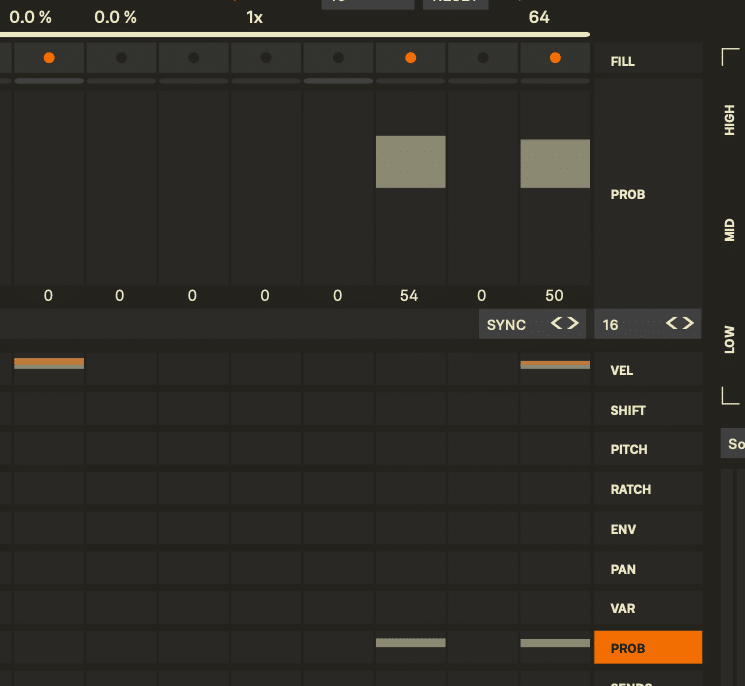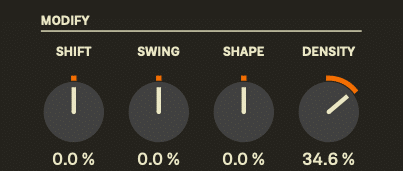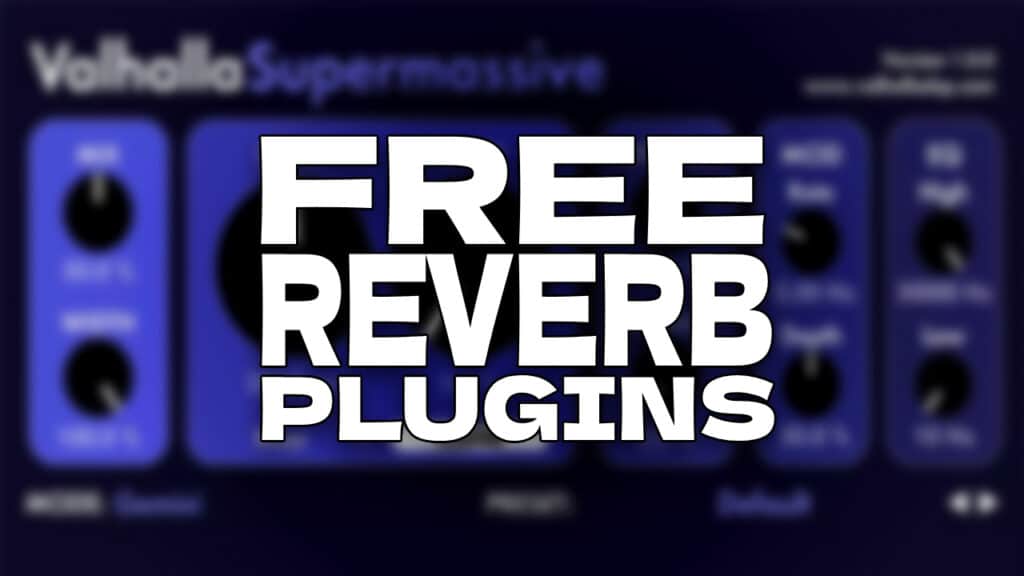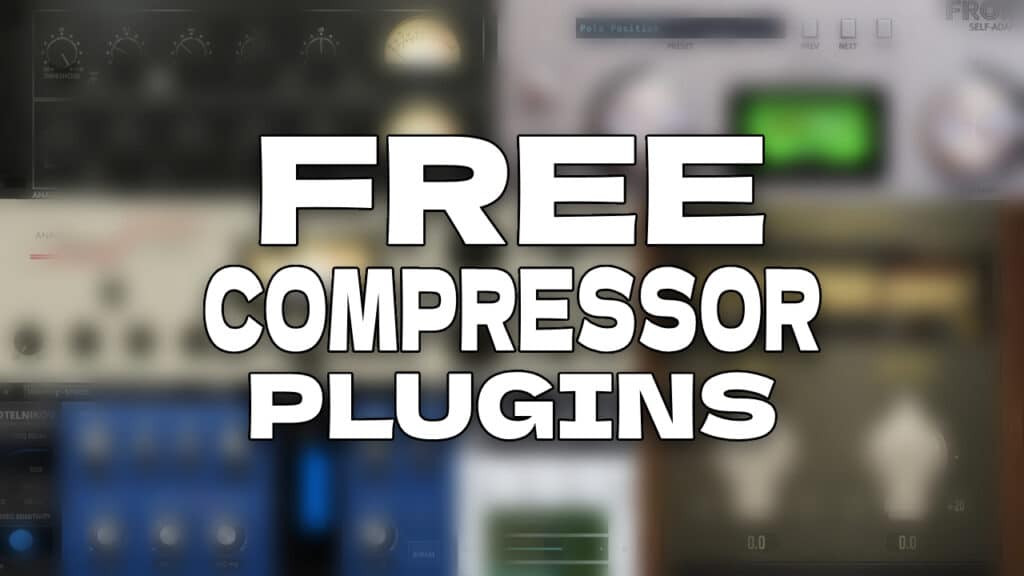Battalion is a drum machine from Unfiltered Audio–a company that has established itself as a developer focused on innovative approaches to music-making. Primarily a maker of audio effects, Unfiltered Audio has occasionally explored the virtual instrument realm and it is Battalion, the second release in this arena, that is the focus of this article.
At face value, Battalion possesses the sorts of features you’d expect from a drum machine plug-in. But lurking beneath the surface are functions that can change a drum pattern in ways that are highly unusual and strikingly powerful. We’ll be looking at a few of those possibilities here.
BATTALION GUI’s
Battalion has various theme color choices and 5 main views accessible from the tabs along the bottom. In this article, I’ll be looking at the Sequencer view shown below:
Battalion Sequencer View
BATTALION DEMO
Basic Starting Pattern
Before we get into the unique capabilities of Battalion, check out the basic beat we’ll be using for this article and demonstration.
It’s deliberately a simple, straightforward rhythm, to help emphasize what’s going on with the different functions we’re about to explore. The kick and hi-hat patterns are shown below.
Hi-hat pattern, with a hit on every 16th note, and a velocity-based accent on beat 1.
Kick pattern, with hits on the 1st, 4th, 7th, 9th, 14th, and 16th steps of the pattern, and velocity accents on steps 1, 9, and 16.
NOTE: The snare lands on the 2nd and 4th beat, and remains the same throughout this entire article.
Shape
Let’s start with the Shape parameter. Shape lets us speed up, or slow down, the timing of an individual drum track. What’s more, that speed change repeats within the pattern itself, even while the other drum tracks remain the same.
This is a lot easier to demonstrate than to describe, so let’s listen to the example below:
We start off with the original beat, including a hi-hat pattern with notes placed equally on each of the pattern’s 16 steps. We then start moving the hi-hat’s Shape control to the right. As we do so, the timing of the hi-hat pattern is warped: the notes at the beginning of the pattern fall behind the beat and then speed up throughout the pattern until they’re ahead of the beat by the end of the bar.
As the example plays, the Shape control is moved further and further to the right, which exaggerates this “elastic time” effect. With Shape set all the way to the right, the hi-hat pattern is completely unrecognizable from its original straight 16th rhythm.
At the end of the example, Shape returns to its default/neutral value, and we can hear the original pattern again.
In the next example, the hi-hat’s Shape control is moved in the opposite direction, counterclockwise from noon, to access negative values. Now the hi-hat speeds up at the beginning of the pattern, and slows down as the pattern moves through its 16 steps.
As the example plays, the Shape parameter is moved further and further to the left (counterclockwise), making the effect increasingly extreme. At the very end, Shape returns to 0, and we hear the original pattern in its normal state.
In the examples below, the Shape function is applied to the kick drum, while leaving the hi-hats in their normal state.
Kick Shape Up
Kick Shape Down
Because the kick drum pattern is more sparse and syncopated than the hi-hat, the rhythms that Shape produces can be more erratic and unpredictable.
Probability
The next example highlights Battalion’s unusual approach to the Probability parameter. Probability is a common function in many contemporary sequencers and drum machines: at 100%, a note plays every time the pattern repeats. Below 100%, the note could potentially not sound on any given repetition. The lower the Probability, the less likely it is that the note will be heard.
Battalion’s Probability function starts with that premise, but then asks the question: What does Probability ABOVE 100% sound like? In the case of Battalion, it increases the likelihood that a note will be “flammed,” or divided into two separate hits.
The example above begins with Probability at 100%, and then gradually increases the Probability values for the last two notes in the kick drum pattern. This makes them increasingly likely to produce two faster hits, rather than the single one that 100% Probability creates. As the example progresses, Probability is raised above 100% for other notes in the kick pattern. Towards the end of the example, we move to “regular” Probability values, below 100%. As expected, some of the kick notes become less likely to sound.
Density
The Density control is, in some ways, similar to Probability. Lowering the Density of a track effectively decreases the probability of every hit in the pattern at the same time. The lower the Density, the less likely it is that any note in the pattern will be heard.
While negative values make each note in a pattern less likely to play, increasing Density above zero creates the possibility that empty steps in the pattern will actually sound a note.
In the example below, we can hear the effects of both positive and negative Density on the kick drum pattern. The first half of the example gradually brings Density down from zero, which lowers the probability of all of the kick drum hits. Halfway through the example, we start increasing Density above zero, which causes random empty steps in the kick pattern to start playing notes. As Density is increased above zero, the kick pattern becomes busier and, literally, denser.
The last example uses the Shape and Density controls for both the hi-hat and the kick, as well as Probability for the kick.
As the pattern plays, these controls are continuously adjusted for both instruments. The combination of active parameter changes creates a morphing, evolving rhythmic performance, which bears little resemblance to the straightforward beat we started with.
CONCLUSIONS
Music creators in 2025 are blessed with a wide array of options for software drum programming and sequencing. The distinctions between these choices tend to lie in the subtleties of their design philosophies, and the ways that users can access those concepts.
Battalion’s feature set is focused on making powerful, dramatic, real-time changes to both the individual drum sounds and their timing in the onboard sequencer. It’s very much geared towards the notion of “a drum pattern” as a technical starting point for dynamic and evolving performances, rather than a fixed, static loop. The functions we’ve explored here are just a few of the many options available to that end.
As with nearly all of Unfiltered Audio’s releases, Battalion is unapologetically unconventional, and almost certainly offers possibilities for beat creation that you haven’t encountered before. For music-makers interested in unusual approaches to rhythmic programming, Battalion warrants a serious look.
ABOUT THE AUTHOR
Andre LaFosse is a music teacher and transcriber, guitar owner, producer/engineer, composer/improviser, devil’s advocate of live looping, synthesizer dilettante, and general tortured artist. He is equally at home and/or out of place in the worlds of instrumental performance and electronic programming. His music-making explores various ways of reconciling, uniting, contrasting, and/or fighting those two facets of sound creation. A graduate of California Institute of the Arts, Andre’s work has been covered in publications and outlets including Guitar Player, Electronic Musician, Tape Op, Time Out New York, WNYC Radio’s New Sounds, Alternative Press, Make Weird Music, and many others. His recorded body of work is currently available through 7D Media. Check out his YouTube Channel for reviews and product demos.
EXTRAS
Want to win a free license to Kontakt 8? Be one of the first 1000 people to FOLLOW WAVEINFORMER ON INSTAGRAM to be automatically entered to win one of three full-version Kontakt 7 licenses! Read more.
Assess your knowledge of essential audio concepts using our growing catalog of online Quizzes.
Explore more content available to Subscribers, Academic, and Pro Members on the Member Resources page.
Not a Member yet? Check the Member Benefits page for details. There are FREE, paid, and educational options.

